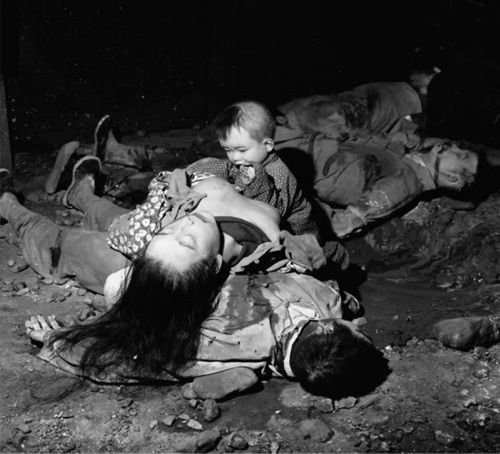Review by Claudia Moscovici, author of Holocaust Memories: A Survey of Holocaust Memoirs, Histories, Novels and Films (Rowman & Littlefield Publishing Group, 2019)
https://www.amazon.com/gp/product/076187092X/ref=ox_sc_saved_title_3?smid=ATVPDKIKX0DER&psc=1
Iris Chang’s book, The Rape of Nanking: The Forgotten Holocaust of WWII describes one of the most brutal mass murders in world history: the massacre of over 300,000 Chinese men, women and children by Japanese soldiers in what she calls “an orgy of cruelty” in the (then) capital city of Nanking, during the winter of 1937. The blood bath took place in the span of about six weeks, from December 12, 1937 to February 10, 1938. As Chang states, “Indeed, even by the standards of history’s most destructive war, the Rape of Nanking represents one of the worst instances of mass extermination” (The Rape of Nanking, New York: Penguin books, 1997, 5). What is remarkable about the sheer cruelty of Japanese attack is not only the mass murder of countless innocent civilians, but the also the systematic rape, torture and maiming of women and children.
Chang describes in gruesome detail how Japanese soldiers would gang rape women, ranging from girls only nine or ten years old to elderly women in their 80’s and 90’s. Nobody was safe anywhere, at any time. The rapes occurred at all hours of the day and night, everywhere: in homes, in the streets, in apartments, in offices or stores. Often girls would die from these savage rapes. Not content with raping and humiliating women in a culture that prized female virtue and chastity, some of the Japanese soldiers went on to savagely beat their victims, maim them, cutting off their breasts or vaginas, disemboweling them, ripping babies out of the bellies of pregnant women, and even impaling them with bayonets. Their sadism knew no bounds.
Men were not immune from harm either. In fact, the Japanese first targeted soldiers—and prisoners of war–luring them in groups of about 200 men to designated parts of the city with promises of food, water, and humane treatment. Nothing could have been further from the truth than these false promises. After leaving them without food and water for days, thus weakening their health and spirit, the Japanese soldiers would round up the Chinese prisoners and murder them. Sometimes these mass murders would turn into game-like killing sprees, in which some of the Japanese soldiers would compete with one another in who could kill the most Chinese prisoners. After luring Chinese soldiers to their deaths, thus depriving the city of its defense, the Japanese soldiers turned their rage upon the civilian population of Nanking.
How can one explain this brutality? Chang traces historically the roots of Japan’s martial mentality, starting with the samurai warrior class. She also discusses the more recent, twentieth-century doctrine, of racial superiority to the Chinese. Then she outlines some of the economic factors—particularly the depression of the 1930’s—that, along with the doubling of the population of Japan to 65 million persons, made it “increasingly difficult for Japan to feed its people” (26). The country’s leaders came to view imperial expansion, particularly the conquest of China and its territories, as a solution to these economic and demographic problems.
Ultimately, however, part of the explanation has to do, as in Germany’s case with Hitler, with the malicious decisions of evil leaders. The Japanese leadership—perhaps Prince Asaka himself—issued a clear order to the rank-and-file soldiers: “KILL ALL CAPTIVES” (40). This command was motivated by a total disregard for human life (at least, for the lives of the Chinese captives), as well as by practical concerns. Killing their victims would mean having fewer mouths to feed, fewer people to shelter, and fewer worries about Chinese retaliation. Prince Yasuhiko Asaka (1887-1981), the temporary commander of the Japanese forces in Nanking, was known for his ruthlessness in war. Kesago Nakajima (1881-1945), the Lieutenant General of the Imperial Japanese Army largely responsible for the atrocities committed in Nanking, was far worse. By all accounts, Nakajima was a reputed sadist. According to Chang, David Bergamini describes him in Japan’s Imperial Conspiracy as a “small Himmler of a man, a specialist in thought control, intimidation and torture”. Even his biographer, Kimura Kuninori, calls him “a beast” and “a violent man” (37).
The rape of Nanking, the Holocaust, the Stalinist purges and the many atrocities of WWII don’t prove that humanity, as a whole, is evil. However, these massive atrocities across cultures do prove that there is a percentage of human beings who are capable of unleashing boundless violence in the right conditions. As Chang herself states, “Looking back upon millennia of history, it appears clear that no race or culture has a monopoly on wartime cruelty. The veneer of civilization seems to be exceedingly thin—one that can be easily stripped away, especially by the stresses of war” (55). The Rape of Nanking is a well-documented, remarkable history that goes a long way in making sure that “the forgotten Holocaust” will be remembered by generations to come.Iris
Claudia Moscovici, Literature Salon

